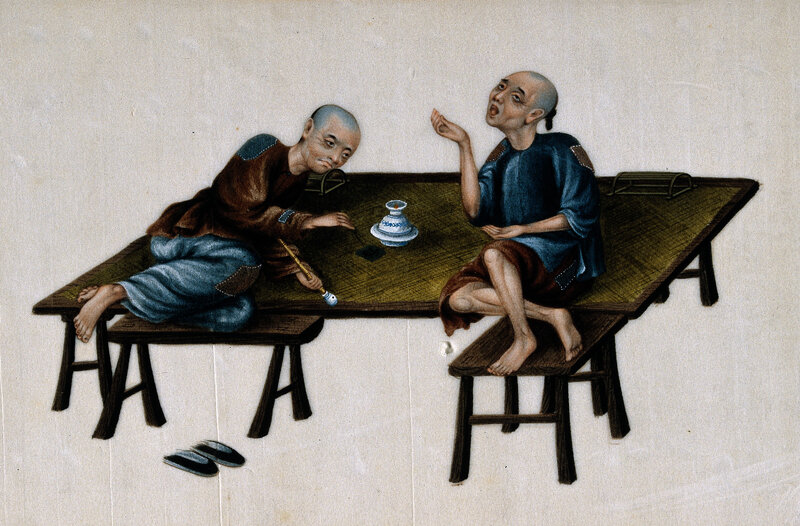Developmental Drugs

It’s hard to imagine a campaign setting that doesn’t have drugs.
It’s hard to imagine a campaign setting that doesn’t have drugs.
Drugs are ubiquitous in human history. There’s probably never been a time period when humans existed without making use of one substance or another to get high, get low, dull pain, reduce inhibitions, or warp perception. In the days before alcoholic drinks were deliberately brewed, primitive humans sought out over-ripe and fermented fruits, and hallucinogens have probably been used to have spiritual experiences and visions since before there was a capacity to keep a record of it. Unless a campaign takes place in some sort of ultra-puritanical heaven, there’s almost certainly some substance that creatures use to induce euphoria or mess with their minds… and even in that hypothetical heaven, there’s probably some form of music, or even prayer, which is used in much the same way. Important as they are, it’s a shame if a campaign setting’s drugs don’t grab players’ interests, since drugs are always a potential storytelling tool, source of conflict, source of income, or source of stat boosts and penalties at critical moments. While drugs certainly don’t have to be realistic, it’s nice if they make some sense, so to that end, here are a couple of simple guidelines that might help a storyteller invent plausible intoxicants, or at least, add some plausibility to the absolutely ridiculous drug that’ll make the game really interesting.
A drug’s side effects can be surprising and seemingly unrelated to their primary intended effect, like how the tetrahydrocannabinol in cannabis makes blood vessels dilate and thereby makes eyes appear red. That said, there are some relatively predictable rules. Drugs that wake people up also tend to speed up the bowels, and vice versa; something which is “activating” in one part of the body tends to also be activating in others. Similarly, drugs that wake people up are more likely to result in some form of increased aggression than drugs that make people sleepy, although marijuana’s tendency to cause paranoia can certainly result in aggressive behaviour as well. A drug that helps focus concentration probably impairs sleep, while a drug that promotes sleep probably increases the risk of odd or frightening dreams.
And speaking of unwanted effects,
At the end of the day, of course, drugs don’t have to make sense. Ten years ago, very few people would have predicted that methylenedioxypyrovalerone (better known as “bath salts”) would turn a handful of its users into flesh-eating zombies, but it kind of did. What seems impossible today might always turn out to be possible tomorrow… even if it usually won’t.
More than four years ago, Dr. Eris Lis, M.D., began writing a series of brilliant and informative posts on RPGs through the eyes of a medical professional, and this is the one that appeared here on June 11, 2016. Lis is a physician, gamer, and author of the Skirmisher Publishing LLC OGL sourcebook Insults & Injuries, which is also available for the Pathfinder RPG system.






